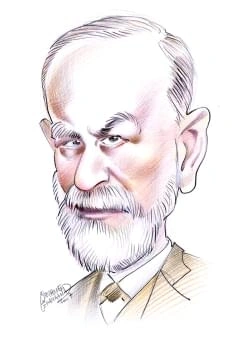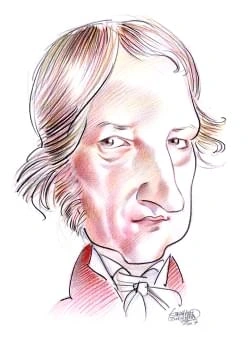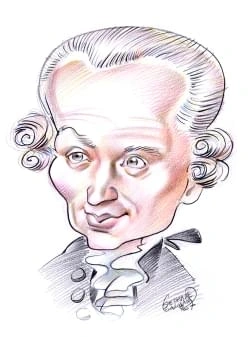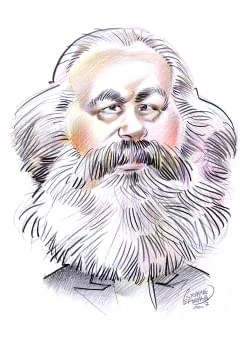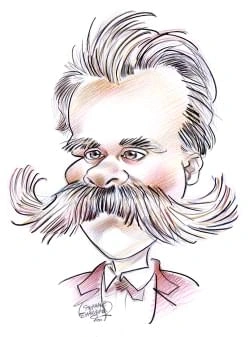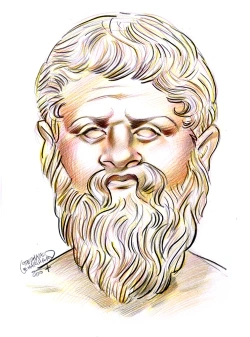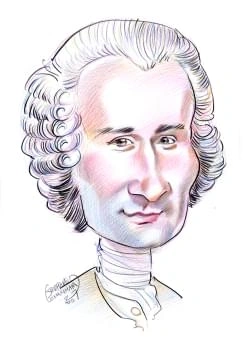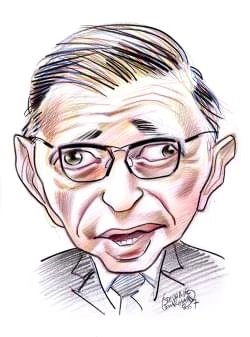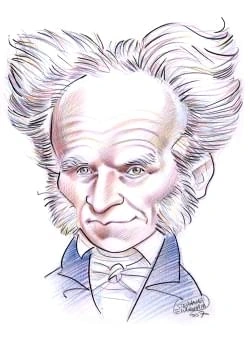319 résultats pour "economy"
-
Moscow (city, Russia) - geography.
V RECREATION About 30 percent of Moscow’s territory is occupied by parks and public gardens, which were important elements of Soviet city planning. Gorky Park, which providesactivities such as amusement rides and boating, sits on the right bank of the Moscow River; the park’s display of a retired Soviet space shuttle dominates the riverside.The Moscow Zoo is located just west of the city center. The Botanical Gardens, administered by the Russian Academy of Sciences, offers a diverse display of...
-
Montréal - geography.
percent), and Eastern Orthodox (2.8 percent) religions. Another 5.4 percent claim no religious affiliation. IV EDUCATION AND CULTURE Montréal has a large number of private schools, most of them partially funded by the province. Like the rest of Québec province, Montréal has two public schoolsystems, one for French speakers and one for English speakers. The Charter of the French Language (1977), known as Bill 101, restricts access to English-languageschools and requires children of immigrants t...
-
Montréal - Geography.
percent), and Eastern Orthodox (2.8 percent) religions. Another 5.4 percent claim no religious affiliation. IV EDUCATION AND CULTURE Montréal has a large number of private schools, most of them partially funded by the province. Like the rest of Québec province, Montréal has two public schoolsystems, one for French speakers and one for English speakers. The Charter of the French Language (1977), known as Bill 101, restricts access to English-languageschools and requires children of immigrants t...
-
Detroit - geography.
of German and Irish immigrants. In the first half of the 20th century, the percentage of foreign-born residents declined, even though many immigrants arrived fromeastern Europe. During World War II (1939-1945), both whites and blacks were attracted from the South to work in the city’s defense industries. In 1950 foreign-bornand black residents each made up about 16 percent of the total population. In the five decades after 1950, the city lost almost half of its population, as many white resident...
- The economy of the Principality is diverse: tourism, industry, property and services, particularly the banking sector.
-
Pierre Elliott Trudeau.
IV PRIME MINISTER After the resignation of Lester Pearson as leader of the Liberal Party, Trudeau was chosen as his successor, and on April 20, 1968, he became prime minister. He calleda general election and showed himself to be a brilliant campaigner, projecting an image of youthful charm and vitality. He argued for a united Canada with equal rightsfor French- and English-speaking citizens and opposed special status for any province. The voters gave him a substantial majority over Robert Stan...
-
Pierre Elliott Trudeau - Canadian History.
IV PRIME MINISTER After the resignation of Lester Pearson as leader of the Liberal Party, Trudeau was chosen as his successor, and on April 20, 1968, he became prime minister. He calleda general election and showed himself to be a brilliant campaigner, projecting an image of youthful charm and vitality. He argued for a united Canada with equal rightsfor French- and English-speaking citizens and opposed special status for any province. The voters gave him a substantial majority over Robert Stan...
-
Unemployment.
set up to monitor the economy and provide advice to the president and Congress. Between 1945 and 1990 nine cyclical swings in unemployment occurred; all weresmaller than the 1930s depression. During this period the unemployment rate was as low as 2.9 percent (1953) and as high as 9.7 percent (1982). Because of cutbacksin the unemployment insurance program and changes in the nature of employment during the 1980s, however, only 37 percent of jobless workers received benefits in1990. Fears that the...
-
-
Shanghai - geography.
language. V EDUCATION AND CULTURE Shanghai is one of China’s leading centers of learning and culture. The metropolitan area is home to more than 40 institutions of higher learning. These include some ofChina’s most famous universities, such as Fudan University (founded in 1905), Tongji University (1907), and the East China Normal University (1951). A large branch ofthe Chinese Academy of Sciences is located in Shanghai, and extensive research is undertaken in areas such as semiconductors, laser...
-
San Diego - geography.
Qualcomm Stadium is the home of the San Diego Chargers, playing major league football. PETCO Park is the home of the San Diego Padres, playing major leaguebaseball. Major sporting events in the city include a professional golf tournament in February, hydroplane races on Mission Bay in late summer, and the Holiday Bowlpostseason college football game in December. VI ECONOMY The total value of all the goods and services produced in San Diego make it one of the most powerful economies in the worl...
-
Himalayas - geography.
result of deforestation the habitat of most of the wildlife has been destroyed. They are now restricted to special protected areas such as the Jaldapara and Kazirangasanctuaries in India ( see Kaziranga National Park) and the Chitawan preserve in Nepal. There are few animals in the Middle Himalayas because of extensive deforestation. In the Great Himalayas musk deer, wild goats, sheep, wolves, and snow leopards are found. The existence of the Abominable Snowman or Yeti has beenreported by highla...
-
Houston - geography.
Prominent historical and cultural institutions include the Civic Center Complex, located in the central business district. The complex is composed of the George R. BrownConvention Center; the Wortham Center, which is the home of the Houston Grand Opera and the Houston Ballet; and the Jesse H. Jones Hall for Performing Arts, whichis the home of the Houston Symphony. The nearby Alley Theatre houses a professional repertory acting company. Among other local professional performance groupsare the Ma...
-
Peter the Great
I
INTRODUCTION
Peter the Great or Peter I (1672-1725), tsar and, later, emperor of Russia (1682-1725), who is linked with the Westernization of Russia and its rise as a great power.
V LATER REIGN Before long, however, these and other reform measures had to cede center stage to the prosecution of the Great Northern War (1700-1721) against Sweden. Peter’sjourney west did not result in a great alliance against the Ottomans, but it led to one against Sweden. Russia fought together with Denmark and the union of Polandand Saxony against Sweden to win the Baltic coastline, the 'window into Europe,' and to break Swedish dominance over the northern part of the continent. At the tim...
-
Peter the Great.
V LATER REIGN Before long, however, these and other reform measures had to cede center stage to the prosecution of the Great Northern War (1700-1721) against Sweden. Peter’sjourney west did not result in a great alliance against the Ottomans, but it led to one against Sweden. Russia fought together with Denmark and the union of Polandand Saxony against Sweden to win the Baltic coastline, the 'window into Europe,' and to break Swedish dominance over the northern part of the continent. At the tim...
-
Bhutan - country.
languages ( see Indo-Iranian Languages) and follow Hinduism. Nepalese people constitute a significant portion of Bhutan’s population. They are the most recent settlers, occupying south central and southwestern Bhutan. TheNepalese are mainly Rai, Gurung, and Limbu ethnic groups from the eastern mountains of Nepal. Nepalese immigration has been banned since 1959, when theBhutanese government feared the minority would become too populous. Nepalese are not permitted to live in the central Middle Hi...
-
Herbert Hoover.
E Postwar Work Even after the armistice, the Allies continued their blockade around Germany. Hoover, in Europe again, worked to have it relaxed. He was appointed chairman of theAmerican Relief Administration to assist in the economic restoration of Europe, receiving from the U.S. Congress $100 million to fight famine and plague. In this officialrole, and afterward as a private citizen, Hoover oversaw the distribution of 46 million tons of food to people in 30 countries. He controlled shipping,...
-
-
Herbert Hoover
E Postwar Work Even after the armistice, the Allies continued their blockade around Germany. Hoover, in Europe again, worked to have it relaxed. He was appointed chairman of theAmerican Relief Administration to assist in the economic restoration of Europe, receiving from the U.S. Congress $100 million to fight famine and plague. In this officialrole, and afterward as a private citizen, Hoover oversaw the distribution of 46 million tons of food to people in 30 countries. He controlled shipping,...
-
Tunisia - country.
mixture of Berber and Arab stock, and they regard themselves as Arabs. Nearly everyone speaks Arabic. The population of Tunisia is concentrated in the coastal plain. It is fairly dense in the hilly north, but the arid plateau, basin, and south are thinly settled. About two-thirds of the country’s people live in urban areas. A Principal Cities The capital and largest city of Tunisia is the seaport of Tunis. Other important cities include Sfax, a port and center of trade on the eastern coast; Sūs...
-
Mesoamerica.
for cooking. In other regions, the earliest ceramics are more sophisticated technically and aesthetically. At around 1800 BC in the Pacific coastal region of Soconusco (in what is now southeastern Chiapas State, Mexico), the earliest pottery was very complex both in forms and decoration. It seems to have had a social function and beenused primarily for ritual feasting. III MAJOR CIVILIZATIONS Over a period of 3000 years, beginning in about 1500 BC, a number of important cultures emerged in M...
-
Railroads.
III GAUGES The gauge of track is the distance between the inner edges of the rails at points 1.59 cm (0.626 in) below the top of the heads. In the United States, Canada, theUnited Kingdom, Mexico, Norway, Sweden, and much of continental Europe, the standard gauge is 143.51 cm (56.5 in). Why this measurement became the standard isa matter of speculation. Probably the tradition is inherited from early tramroads built to accommodate wagons with axles 1.5 m (5 ft) long; some of the early edge rail...
- A former Eastern block country, which opposed Soviet power from the 1980s, in 1990 Poland moved to a market economy.
-
Slovakia - country.
The country is divided informally into the three regions of Western Slovakia, Central Slovakia, and Eastern Slovakia, corresponding to administrative divisions that wereabolished in 1989. Most of Slovakia’s 600,000 Hungarians live in the southern parts of Western and Central Slovakia, which served as the cultural center of Hungary forseveral centuries after Hungary proper was invaded by the Ottomans in the 16th century. The Ruthenian and Ukrainian minorities are concentrated in the northernregio...
-
Denver - geography.
Denver is the center of professional sports in the Rocky Mountain region. Major league teams are the Denver Broncos (football), Colorado Rockies (baseball), DenverNuggets (basketball), and Colorado Avalanche (ice hockey). Coors Field (opened in 1995) is the home of the Colorado Rockies. The Broncos began play at the newlyconstructed Invesco Field at Mile High in 2001, and the Nuggets and Avalanche play at the Pepsi Center. The National Western Stock Show and Rodeo, one of thelargest such shows i...
-
Zambia - country.
The Livingstone Museum, at Livingstone, has a collection relating to the archaeology and natural history of southern Africa. The Institute for African Studies of theUniversity of Zambia publishes studies relating to central Africa. IV ECONOMY The wealth of Zambia is based largely on mining in the rich copper belt, and downturns in copper prices have severely damaging economic consequences. Someprocessing and manufacturing has been started since independence, and during the 1970s attempts were...
-
-
Vietnam - country.
E Natural Resources Vietnam’s most valuable natural resource is its land, particularly the fertile, alluvial soils in the Red and Mekong deltas. Some 29 percent of the land is currently beingcultivated. Vietnam has some valuable mineral resources, including gold, iron, tin, zinc, phosphate, chromite, apatite, and anthracite coal. Most deposits are located in the northernpart of the country. Few attempts were made to extract these minerals until the French takeover of Vietnam at the end of the 1...
-
Czech Republic - country.
enforcement of environmental regulations. Environmental considerations have also led some government officials to promote nuclear energy as a key source of powerfor the country’s future. The Czech Republic produces most of its energy by burning domestic coal. Much of the coal burned is low quality with a high ash and sulfur content—a key componentof acid rain—producing high levels of air pollution. Forests in the Czech Republic are among the most seriously affected by acid rain in all of Europe....
-
Bill Clinton.
When Arkansas governor David Pryor ran for the U.S. Senate in 1978, Clinton ran for governor. He promised to improve the state’s schools and highways and toimprove economic conditions so that more jobs would be created. At that time, the average income of people in Arkansas ranked 49th among the 50 states. Clinton woneasily, receiving 60 percent of the vote against four opponents in the Democratic primary election and 63 percent against the Republican candidate, Lynn Lowe, in thegeneral election...
-
Bulgaria - country.
E Climate Most of Bulgaria has a continental climate, with cold winters and hot summers. The climate in general is more severe than in other European areas of the samelatitudes, and the average annual temperature range is greater than that of neighboring countries. Severe droughts, frosts, winds, and hail storms frequently damagecrops. A Mediterranean climate, with dry summers and mild, humid winters, prevails in the valley of the southwestern Rhodope Mountains; the northern limit of theclimati...
-
Bill Clinton - USA History.
When Arkansas governor David Pryor ran for the U.S. Senate in 1978, Clinton ran for governor. He promised to improve the state’s schools and highways and toimprove economic conditions so that more jobs would be created. At that time, the average income of people in Arkansas ranked 49th among the 50 states. Clinton woneasily, receiving 60 percent of the vote against four opponents in the Democratic primary election and 63 percent against the Republican candidate, Lynn Lowe, in thegeneral election...
-
Cuba - country.
Only two land mammals, the hutia, or cane rat, and the solenodon, a rare insectivore that resembles a rat, are known to be indigenous. The island has numerous batsand nearly 300 kinds of birds, including vultures, wild turkeys, quail, finches, gulls, macaws, parakeets, and hummingbirds. The bee hummingbird of Cuba is thesmallest bird in the world. Among the few reptiles are tortoises, caimans, the Cuban crocodile, and a species of boa that can attain a length of 3.7 m (12 ft). More than700 speci...
-
Milwaukee - geography.
acts ranging from alternative rock to country music. During the rest of the summer months, the park is the site of weekend festivals staged by Milwaukee’s majorethnic groups: Italian, Irish, German, African American, Polish, Mexican, Native American, and Asian. The Great Circus Parade, featuring the world’s largest collection ofornate circus wagons, is another staple of Milwaukee’s festival season. The Wisconsin State Fair is held annually in nearby West Allis. V RECREATION The largest single u...
-
Kuwait (country) - country.
Oil revenues have allowed Kuwait to build an extensive educational system, yielding a literacy rate of 84 percent. Public school is free and compulsory from the age of 6to 13, and several private schools also teach this age group. Kuwait University (founded in 1966) is also free and offers programs in a wide range of professional andscientific fields at several campuses. Both the extensive library system at Kuwait University and the collection at Kuwait National Museum (1957) were heavily damage...
-
-
Pittsburgh - geography.
College of Allegheny County (1966), with branches in the city and suburbs. Pittsburgh has many outstanding cultural institutions. The Oakland district is where Carnegie Mellon University and the University of Pittsburgh are located. The CarnegieMuseums of Pittsburgh include The Carnegie Museum of Art (including the Scaife Galleries), which holds a distinguished motion-picture and video collection and a uniquestudy of architecture; the Carnegie Museum of Natural History, which displays an extensi...
-
Mississippi - geography.
The climate of Mississippi is characterized by long, hot, and humid summers and generally mild winters. The higher lands in the northeast are usually cooler than otherareas of the state. D1 Temperature Average January temperatures range from about 6° C (about 42° F) in northeastern Mississippi to about 12° C (about 54° F) along the Gulf Coast. No part of the stateis entirely free from freezing temperatures, but prolonged periods of extreme cold rarely occur. Temperatures more than 15° C (30° F)...
-
Mississippi - USA History.
The climate of Mississippi is characterized by long, hot, and humid summers and generally mild winters. The higher lands in the northeast are usually cooler than otherareas of the state. D1 Temperature Average January temperatures range from about 6° C (about 42° F) in northeastern Mississippi to about 12° C (about 54° F) along the Gulf Coast. No part of the stateis entirely free from freezing temperatures, but prolonged periods of extreme cold rarely occur. Temperatures more than 15° C (30° F)...
-
Tanzania - country.
The population of Tanzania (2008 estimate) is 40,213,162, giving the country an overall population density of 45 persons per sq km (118 per sq mi). Yet the populationdistribution is irregular, with high densities found near fertile soils around Kilimanjaro and the shores of Lake Malawi, and comparatively low density throughout much ofthe interior of the country. In the late 1960s and 1970s the Tanzanian government resettled most of the rural population in collective farming villages as part of i...
-
Egypt - country.
Egypt has a wide variety of mineral deposits, some of which, such as gold and red granite, have been exploited since ancient times. The chief mineral resource ofcontemporary value is petroleum, found mainly in the Red Sea coastal region, at Al ‘Alamayn (El ‘Alamein) on the Mediterranean, and on the Sinai Peninsula. Otherminerals include phosphates, manganese, iron ore, and uranium. Natural gas is also extracted. D Plants and Animals The vegetation of Egypt is confined largely to the Nile Delta,...
-
Cambodia - country.
The population of Cambodia is 14,241,640 (2008 estimate). Population growth per year is estimated at 1.8 percent, one of the highest rates in Asia. The rate of infantmortality is also high. The population density is 81 persons per sq km (209 per sq mi), with the densest concentrations on the heavily cultivated central plain. Themountainous regions of the country, where malaria is widespread, are thinly populated, as are the poorly watered northern provinces. During the late 1970s, under thebruta...
-
Banking.
loans, and some commercial loans in addition to checking accounts and time deposits. Credit unions, SLAs, and savings banks help encourage thriftiness by paying interest to consumers who put their money in savings deposits. Consequently, creditunions, SLAs, and savings banks are often referred to as thrift institutions. Of the various types of banks in the United States, commercial banks account for the greatest single source of the financial industry’s assets. In 2000 the 8,528commercial banks...
-
Italy - country.
C Natural Resources Italy is poor in natural resources. Much of the land is unsuitable for agriculture because of mountainous terrain or unfavorable climate. Italy, moreover, lacks substantialdeposits of basic natural resources such as coal, iron, and petroleum. Natural gas is the country’s most important mineral resource. Other deposits include feldspar andpumice. Many of Italy’s mineral deposits on the islands of Sicily and Sardinia had been heavily depleted by the early 1990s. Italy is rich...
-
-
Kansas City (Missouri) - geography.
Major institutions of higher education in Kansas City are a branch (established in 1929) of the University of Missouri, Avila College (1916), Rockhurst College (1910),DeVry Institute of Technology (Missouri) (1931), and the Kansas City Art Institute (1885). Schools in neighboring suburbs include Park University (1875), in Parkville,and William Jewell College (1849), in Liberty. Baptist, Nazarene, and Methodist theological schools are also located in the area. Midwest Research Institute, one of t...
-
Gerald Ford.
In May 1973 the Senate Select Committee on Presidential Activities opened hearings and in a series of startling revelations, Dean testified that Mitchell had ordered thebreak-in and that the president had authorized payments to the burglars to keep them quiet. The Nixon administration vehemently denied these assertions. In March 1974 a grand jury indicted Mitchell, Haldeman, Ehrlichman, and four other White House officials for their part in covering up the Watergate break-in andreferred to Nixon...
-
Gerald Ford
In May 1973 the Senate Select Committee on Presidential Activities opened hearings and in a series of startling revelations, Dean testified that Mitchell had ordered thebreak-in and that the president had authorized payments to the burglars to keep them quiet. The Nixon administration vehemently denied these assertions. In March 1974 a grand jury indicted Mitchell, Haldeman, Ehrlichman, and four other White House officials for their part in covering up the Watergate break-in andreferred to Nixon...
-
Inca Empire.
The Incas’ public works were built through a labor tax known as mit’a. This tax required most people incorporated into the Inca Empire to provide labor for public worksduring certain portions of each year. This labor tax supported large-scale public works that required the marshalling of large labor forces, such as for the building offorts, roads, and bridges, or the mining of metals and gems. It also allowed the emperor to raise large armies to undertake wars of conquest. Road building was impo...
-
Inca Empire - History.
The Incas’ public works were built through a labor tax known as mit’a. This tax required most people incorporated into the Inca Empire to provide labor for public worksduring certain portions of each year. This labor tax supported large-scale public works that required the marshalling of large labor forces, such as for the building offorts, roads, and bridges, or the mining of metals and gems. It also allowed the emperor to raise large armies to undertake wars of conquest. Road building was impo...
-
St. Louis (city) - geography.
I
INTRODUCTION
St. Louis (city) or Saint Louis,
Between 1940 and 1990 the black population in metropolitan St. Louis nearly tripled. Blacks are most heavily concentrated in three areas in the St. Louis metropolitanregion: East Saint Louis, the North Side close to downtown, and an east-west belt extending from the waterfront to beyond Forest Park. In the 19th and early 20th centuries, areas to the north and south of the central business district were settled by immigrant working families from Germany, Ireland,and many Eastern European countrie...
-
Blacks in Latin America.
Throughout Latin America and the Caribbean the slave population declined at the astonishing rate of 2 to 4 percent a year; thus, by the time slavery was abolished, theoverall slave population in many places was far less than the total number of slaves imported. The British colony of Jamaica, for example, imported more than 600,000slaves during the 18th century; yet, in 1838, the slave population numbered little more than 300,000. The French colony of Saint-Domingue (present-day Haiti)imported mo...
-
Ontario - Geography.
governed Ontario’s initial settlement and development. The province’s most important river is the St. Lawrence. Its route was much improved and enlarged by dredgingand canal building in the mid-20th century. This enabled large ocean-going vessels to reach Great Lake ports ( see St. Lawrence Seaway). The Ottawa River was an important early route to the interior for fur traders and timber merchants. The Niagara River, because of its falls, is a great center of hydroelectric power as well as aninte...
-
-
Ontario - Canadian History.
governed Ontario’s initial settlement and development. The province’s most important river is the St. Lawrence. Its route was much improved and enlarged by dredgingand canal building in the mid-20th century. This enabled large ocean-going vessels to reach Great Lake ports ( see St. Lawrence Seaway). The Ottawa River was an important early route to the interior for fur traders and timber merchants. The Niagara River, because of its falls, is a great center of hydroelectric power as well as aninte...
-
United Kingdom - country.
B Natural Regions and Topography The island of Great Britain can be divided into two major natural regions—the highland zone and the lowland zone. The highland zone is an area of high hills andmountains in the north and west. The lowland zone in the south and east consists mostly of rolling plains. The zones are divided by an imaginary line running throughEngland from the River Exe on the southwest coast to the mouth of the River Tees on the northeast coast. The lowland zone has a milder climat...
}})
